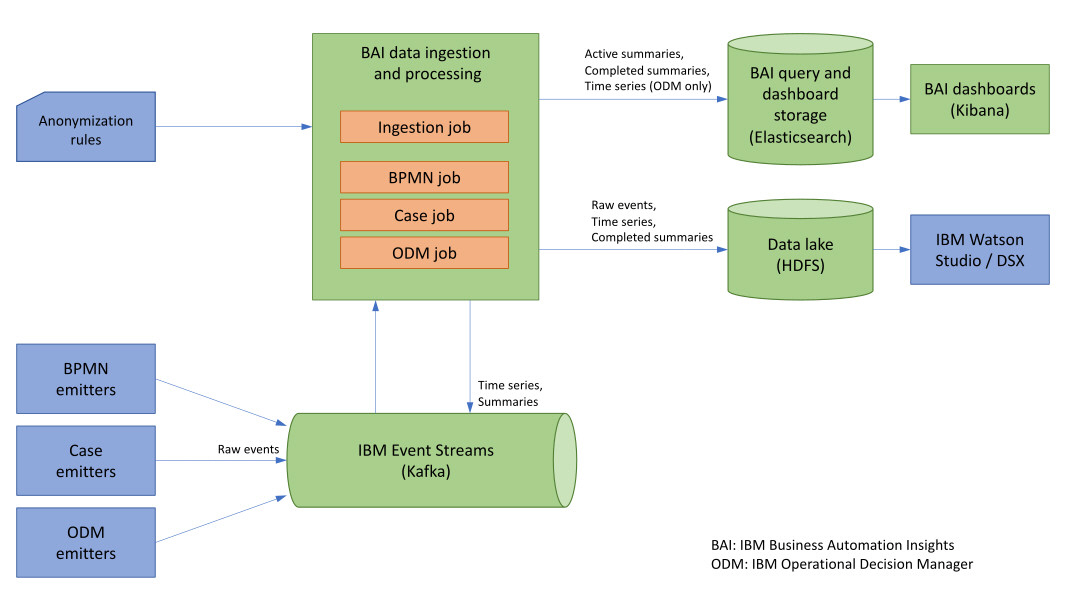Overview - What is IBM Business Automation Insights?
IBM® Business Automation Insights is a platform-level component that provides visualization insights to business owners and that feeds a data lake to infuse artificial intelligence into IBM Digital Business Automation.
Based on state-of-the-art open source technologies, IBM Business Automation Insights allows you to capture all events that are generated by the operational systems that are implemented with the Digital Business Automation products, aggregate them into business-relevant KPIs, and present them in meaningful dashboards for lines of business to have a real-time view on their business operations.
IBM Business Automation Insights lets you take advantage of the valuable data that is generated by those operational systems to apply analytics or machine learning algorithms that add intelligence to the platform and provide guidance to knowledge workers and business owners. The data can be anonymized and published in a data lake. Artificial intelligence potential is illustrated in the form of Jupyter Notebooks, which data scientists and developers can reuse.
You can enhance IBM Business Automation Insights with new dashboards that use event data from your own applications.
Samples
For sample dashboards and getting started material, see Samples.
For examples of Notebooks, see Machine learning with Business Automation Insights.
What's new?
New in 18.0.2IBM Business Automation Insights new capabilities are described in What's new in 18.0.2 - March 2019.
Concepts
- Raw events
- Raw events are the native business events that can be ingested and processed in IBM Business Automation
Insights.
- Business processes and cases from IBM Business Automation Workflow
- New in 18.0.2 Decisions from Operational Decision Manager
- Time series
- Time series are simplified, flattened versions of raw events.
New in 18.0.2 IBM Operational Decision Manager emits only time series.
- Summaries
- Summaries are aggregations of time series. For example, each process instance, each activity
instance, and each case instance has a summary entity. Summaries describe the current state of the
process, activity, or case instance, and compute their duration so far.
Summaries are completed when the process, activity, or case is completed.
New in 18.0.2 IBM Operational Decision Manager does not emit decision summaries.
Main steps of event processing
- Emitters send raw events from BPMN processes, Case activities and cases, and Operational Decision Manager decisions to a Kafka cluster. Learn more about event types and formats in Reference for Business Automation Insights.
- Data ingestion and processing relies on Apache Flink data processing framework, which performs
several jobs. Learn more in Operating an Apache Flink cluster.
- Accordingly, ingestion jobs capture the events and update the HDFS data lake.
- From raw events, through the product jobs, IBM Business Automation
Insights computes the time series and summaries.
- Active and completed summaries (aggregations), and Operational Decision Manager decisions, are stored to Elasticsearch. Storage in Elasticsearch is specifically intended for business users to easily search data and create dashboards. Learn more in Dashboards and IBM Operational Decision Manager samples.
- Time series and completed summaries are also stored in HDFS. Learn more in HDFS data lake.
- Finally, time series and summarized entities are sent back to the Kafka egress topic, typically for further downstream processing in real time.
Architecture
